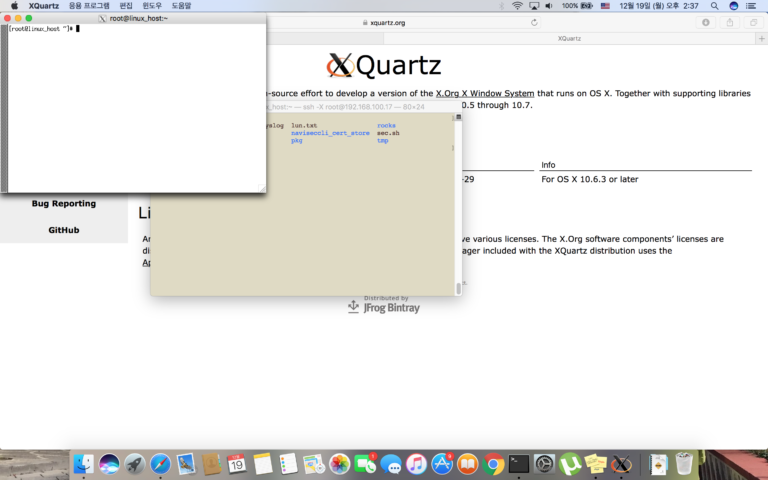
They started by fouling up multiple desktops, and proceeded to go from there, leaving piles of bugs unstomped and more strewn behind in the OS developers’ wake.
Xquartz for mac 10.6.8 mac os#
Yet, rather than stomping out the bugs that were there, streamlining the code, and making incremental changes for the sake of utility, they gave us Lion, the worst Mac OS since 7.5.5. It did what was necessary, ran programs fine, and was reasonably bug-deficient. It’s now a lacklustre desktop built on a largely unmaintained and bitrotting base. MacOS X used to be a decent GUI desktop built on top of a solid, if not slightly quirky, UNIX base. I get that this lower level stuff isn’t Apple’s user-facing focus. It’s one tiny feature, but multiply that by a decade’s worth of advancement and bugfixing across all of the base system, and MacOS is missing out on a lot of stuff. It was added to FreeBSD nearly a decade back. Simple stuff like “readlink -f”, which required writing blocks of Perl inline in shell scripts to work around the deficiency. At my previous job, we were running into several problems due to MacOS lacking features present on every Linux and BSD system for the last 8+ years. The lack of basic maintenance here is becoming a burden to interoperability. The dates for most of them are over a decade ago. Look at the tools provided, and note that most of them were last updated in 10.6. What exactly does that certification mean? And which version of the certification is it…
Xquartz for mac 10.6.8 mac os x#
Mac OS X is obviously not alone in this Linux and Windows users will also have their favourite older releases after which supposedly everything “went downhill”. Since I switched away from the Mac before Snow Leopard came out, and was a fervent Mac user during the PowerPC days, my personal Snow Leopard is Mac OS X 10.4 Tiger, which I still consider my personal best Mac OS X release. There’s a tendency for people to fondly look back upon older releases, whether warranted or not. If Apple can knock stability out of the park in 2018, maybe the legend of Snow Leopard can finally be put to rest. Fixing bugs might not be as marketable as shiny new Animoji or a fresh design, but maintenance can only be deferred so long. Improvements to iOS and macOS, no matter how small, contribute to a better experience for everyone. However, a kernel of truth persists underneath the mythology.

At this point, millions of Mac users have never even used Snow Leopard, and can’t attest to its reliability. OS X Lion succeeded 10.6.8 in July 2011 – closing in on 7 years ago. The myth of Snow Leopard is bigger than life, a cultural reference rooted in nostalgia. In some ways, the narrative is out of Apple’s hands.


 0 kommentar(er)
0 kommentar(er)
